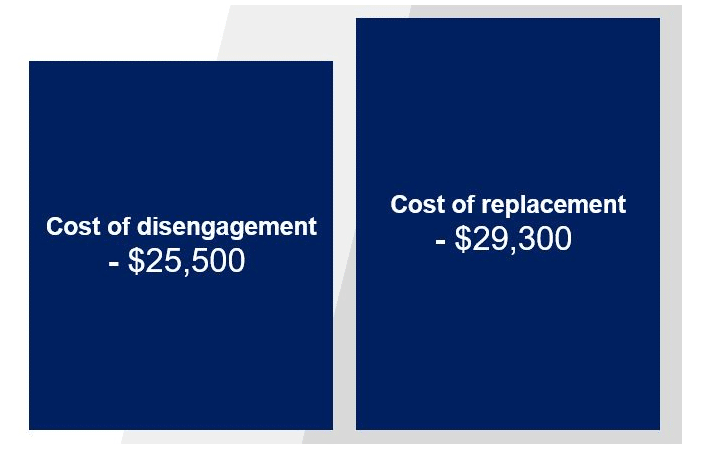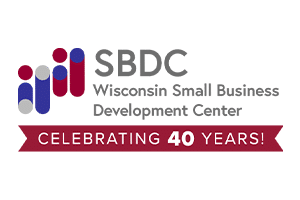Front Line Leader Training Courses

Virtual, Onsite or Uploaded to your Learning Management System (LMS)
Front Line Leader Course Overviews
Most courses can be tailored to 2-4-6-8 hours to support your needs
SERIES 1 LEADERSHIP ATTRIBUTES
In this course, the participants are introduced to The Golden Circle® by Simon Sinek. They review the clarity of Why, the discipline of How, and the consistency of What.
Upon completion of the course, the learner should be able to
- Describe the three elements of Simon Sinek’s Golden Circle®.
- Create a Golden Circle® relevant to their career or a personal situation.
- Explain their WHY using the Golden Circle® they have created.
In this course, the learners are introduced to the Ladder of Accountability and asked to reflect on their own accountability behaviors as well as those of their team members.
Upon completion of the course, the learner should be able to.
- Recite the intent of accountability.
- State at least two factors that impact accountability.
- Identify the accountable behaviors they exhibit.
- Identify the victim behaviors they exhibit.
- Commit to how they will support others on a journey to accountability.
This course focuses on listening and questioning techniques, question types, and how these are enablers for effective coaching. Open-ended/clarifying and probing question types are covered, along with examples of reframing closed questions to one of these more effective types.
Upon completion of the course, the learner should be able to.
- State the preferred type of listening to exhibit when interacting with others.
- Recite the three common questioning pitfalls.
- State the two types of preferred questioning techniques.
- Demonstrate how to reframe a question to remove bias.
The Giving Feedback course is built on the base concepts, such as OPEN and Questioning Techniques. Having this baseline, the learners are introduced to the Listening Cycle and provided an exercise to practice their listening techniques. The participants are also provided with a process to follow to minimize conflict when delivering constructive feedback. The process can also be used to deliver positive feedback.
Upon completion of the course, the learner should be able to
- Recite the three types of feedback.
- State the process on how to frame and deliver feedback.
- Provide feedback utilizing the feedback checklist tool.
This course covers the differences between performance and development, skills and knowledge, roles and jobs, and short- and long-term development plans.
Upon completion of the course, the learner should be able to.
- Explain the differences between performance and development.
- State the differences between skills and knowledge.
- List the three constraints that get in the way of development.
- State the differences between a role and a job.
In this course, participants are introduced to the EDGE of Greatness Model: They learn how they could apply this model when assigning and delegating work and how it will ensure that the assignee is set up for success. Other key concepts covered in this course are prioritization, tone, and escalation.
Upon completion of the course, the learner should be able to.
- Recite the types of delegation and the importance of tone.
- State the intent of the EDGE model and how to apply it while assigning work.
- Create an EDGE model for assigning a task/project.
SERIES 2 EMPLOYEE ENGAGEMENT
In this course, the learners are introduced to several concepts to help them build trust with their employees and co-workers. Topics covered include the emotional bank account, have-to vs. want-to motivators, explaining why, and sharing blind spots.
Upon completion of the course, the learner should be able to.
- Recite three ways to build trust and three ways to erode trust.
- Define their personal blind spots and the importance of vulnerability.
- Explain the importance of starting with WHY.
- Use the ‘conversation starters’ to begin conversations with three employees or co-workers.
In this course, the learners focus on the value that everyone brings to the organization. This starts with knowing your worth, what you value and what value you can bring to the workplace. Recognizing the value that others bring enables the ability to be a strong advocate.
Upon completion of the course, the learner should be able to.
- State the importance of advocating for others.
- List the methods to utilize when trying to identify how to advocate for others.
- Describe how to identify people who may need support.
- Define the benefits of a culture that allows everyone to bring oneself to work.
This course covers several aspects of behavior observation, such as replacing labels with pinpointed descriptors and using the OPEN concept to ensure the behaviors are clearly described in terms that everyone can understand and either act on to improve or continue to sustain. In addition to learning about pinpointing behaviors, the participants learn about the best questioning techniques and listening models to use during behavior observation. Lastly, ABC Analysis is introduced and will be brought back in more detail in a later course.
Upon completion of the course, the learner should be able to.
- Replace behavior labels with pinpointed descriptors.
- Utilize OPEN to ensure they are prepared to coach on the proper behaviors.
- List the two preferred question types.
- List the three elements of the dedicated listening model.
In this course, learners are introduced to the Kübler-Ross Change Curve and the Adoption/Innovation Curve. The participants complete several exercises in this course related to personal and organizational change.
Upon completion of the course, the learner should be able to.
- Recognize and label the Kübler-Ross Change Curve and the Adoption/Innovation Curve.
- Recite the six elements that make a successful change.
- Identify when and where they reside on the change curves.
- Complete the Change Opportunity Analysis form.
This course focuses on providing a process and tool that the learners use to help them address conflict. Following the five elements of the Listening and Responding Cycle coupled with the PIES method helps the learner be more effective when addressing conflict.
Upon completion of the course, the learner should be able to.
- Recite three considerations to account for when preparing to address conflict.
- Explain the four areas of emphasis to consider when addressing conflict and the importance of each one (PIES).
- Utilize PIES when preparing to address conflict.
- State the five elements of the Listening and Responding Cycle.
Knowing some common items that can start conflicts allows us to address potential issues before they escalate to a conflict. Three categories of conflict starters are discussed in this training: Policies, Procedures, and Perceptions.
Upon completion of the course, the learner should be able to.
- State the three areas that are common conflict starters.
- List the four best practices for enabling a culture of conflict prevention.
- Explain Triangulation and its impact on preventing conflict.
SERIES 3 PERFORMANCE MANAGEMENT
In this course, learners hear about what drives performance expectations. Various Organizational and Team drivers are reviewed. Also covered is the importance of understanding the current state, the desired state, and the future state.
Upon completion of the course, the learner should be able to.
- Recite the three considerations when setting expectations.
- State the three elements that drive identification of expectations needed.
- Explain the three creation principles.
In this course, learners focus on SMART goals. When setting goals for yourself, your team, or the organization it is important to ensure that all of the elements of SMART are covered to ensure your success. We also cover three different types of goals: General, Role and Stretch. Lastly, a method for ranking goals or improvement opportunities is taught during this course
Upon completion of the course, the learner should be able to.
- Define a high impact behavior.
- Define each element of a SMART goal.
- List and explain the three types of goals.
- State the two types of goal plans and describe the benefits of each.
In this course, we review the various roles that a coach fills and the influence that coaching can have on one’s behaviors is also covered. The GROW model is introduced as a tool to use when having coaching conversations. The GROW model can be used when considering your own personal or professional needs as well as when coaching others on a wide variety of topics.
Upon completion of the course, the learner should be able to.
- State the three roles of coaching and describe when to use each.
- Recite what each letter of the GROW model stands for and provide a brief description of each.
- Apply the GROW model when coaching themselves and others.
This course focuses on a high-level overview of Applied Behavioral Science and the ABC Analysis: Antecedents, Behaviors, and Consequences. We discuss how one of the roles of the supervisor is to coach employees in desired behaviors and how applying the ABC Analysis can enable that coaching. Also covered is Coaching Action Plans (CAP). We look at how to take the results from ABC Analysis and develop a plan for improvement or sustainment of behaviors.
Upon completion of the course, the learner should be able to.
- State the intent of a Coaching Action Plan.
- Conduct a basic ABC Analysis with the intent of developing a Coaching Action Plan.
This course focuses on the importance of maintaining the privacy of the employee in all stages of disciplinary action. It also focuses on considerations that will allow for confidence that leaders are handling a sensitive subject properly.
Upon completion of the course, the learner should be able to.
- Explain the privacy considerations of disciplinary actions
- Identify how to align to a purpose.
- Recite the importance of timeliness in documenting discipline.
- State the considerations when compiling the evidence for discipline.
This course covers how to deliver formal discipline in a private and respectful manner. It focuses on leader behaviors during the delivery and afterwards to ensure a positive outcome. Leader behavior in these situations can impact how the individual receiving the discipline reacts and can also impact the actions of the team. Allowing time to prepare, remaining calm and unbiased throughout the process, and treating the employee with respect are all critical to delivering formal discipline that results in the desired improvement.
Upon completion of the course, the learner should be able to.
- Discuss the importance of preparing for success and three considerations in doing so.
- State the three considerations for successfully delivering feedback.
- Recite the five stages of grief and give examples of how each may be exhibited by the employee either during or after discipline delivery.
- List three things you can do after delivering discipline to maintain leader-employee relationship.
Front Line Leader Training Options
Dependent upon your specific needs, we have a solution that will benefit your company.
Virtual
E-Learning
Classroom
Blended
Why Invest in Front Line Leader Training?
The Return on Investment (ROI) achieved from investing in your frontline employees is seen when the two metrics shown are mitigated. Employees who are invested-in by their company leadership typically stay with the organization!
Leaders who know how to Lead others enable others to stay with an organization! ROI increases with each person who completes the FLL Training Series.
Scenario based on one employee:
- Disengaged employee salary: $75,000
- Time to fill the position: 70 days
- Hiring Manager’s salary: $100,000
- Training days: 20 days
- Productivity ramp up 60 days
- Time spent interviewing: 8 hours
Based on Gallup assessment of organizational loss
Front Line Leader Training Partners
We’re proud to partner with the below organizations to provide leadership and supervisory training to front line employees and leaders.
Click each image to learn more about each organizations Front Line Leader Offerings




